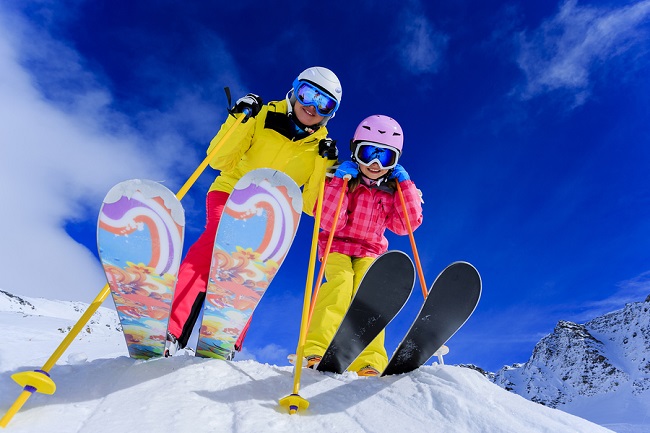
Skiing is the popular activity of gliding or sliding over snow by people who wear skis, usually with metal edges, that are firmly strapped to specially made boots on a person’s feet using bindings. Sounds crazy, doesn’t it?
Skiing was once used as a mode of transportation in the areas of countries that experienced excessive amounts of snow in extremely cold winter seasons. Through the years, skiing has evolved to become not just a mode of transportion for people but also as a widely practiced and extremely popular and competitive recreational physical activity.
During the 20th century, skiing’s popularity has grown enormously and the activity has evolved to become an amazing sport that it has been included as one of the most watched events of the Winter Olympics.
For Most Everyone
Certainly, skiing is a real winter sport and activity that most anyone can enjoy. But to begin with, not all people from around the world would be able to do it, especially in countries where there is no snow. But tropical countries, like most Asian countries, are beginning to send athletes to compete in skiing competitions in various sporting events.
How could that be possible? It is because the activity amazes people of all ages and even those in tropical countries are hooked on it. They learn skiing by going to other countries to learn, or with indoor centers that create replicas and a set up of downhill slopes and covering them with man made snow-like ice so people can ski.
Some Tips for Beginners
Here are some simple and practical guidelines that will help you prepare for the activity. So before hitting the road to ski with family and friends, read on:
- Be physically fit for the activity. The movements while skiing might look easy in the view of a bystander, but in actuality, the activity is really hard and tiring. Because skiing is just like any other sport, make sure to perform some warm up activities before hitting the slopes, otherwise, injuries could incur.
- Read about skiing. Attend short or crash courses and consult the experts before embarking on a ski trip. Skiing is a sport or a recreational activity that could result in serious injuries and emergency situations, so expect the unexpected and learn the fundamentals and safety and contingency measures and practices.
- Know your limitations. If you have permanent knee injuries or disabilities, acknowledge them humbly and honestly. If those shortcomings could prevent you from skiing, so be it. It would be better to just let it go than risk your life just trying to ski anyway.
- Invest in safe and reliable skiing equipment. Before using your skis, boots, what-have-you, always make sure they are in excellent condition. You would not want to be stuck somewhere in the middle of the snow-capped hills just because the ski equipment suddenly broke or malfunctioned along the way.
- If you are not yet familiar with the what to look for, always make sure the equipment is checked by an expert before wearing them. Also, if possible, ski with a skilled skier so you will be safe and in goods hands while in the arduous process of learning to ski.





